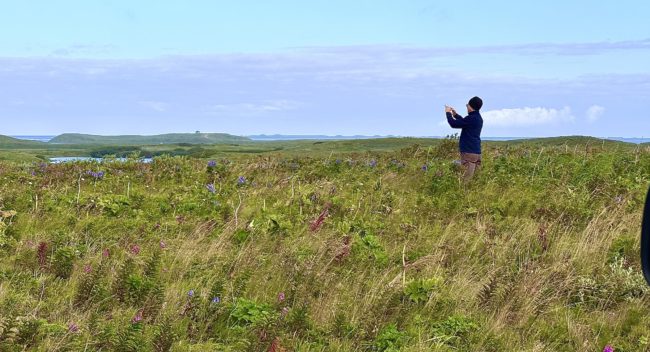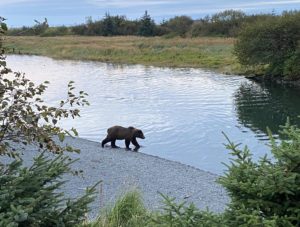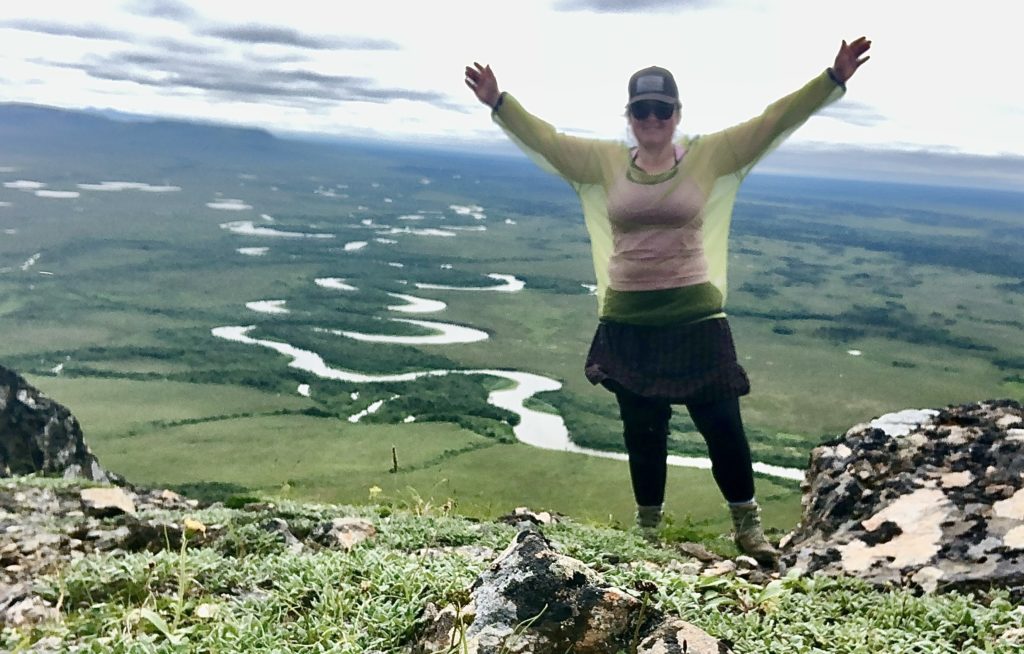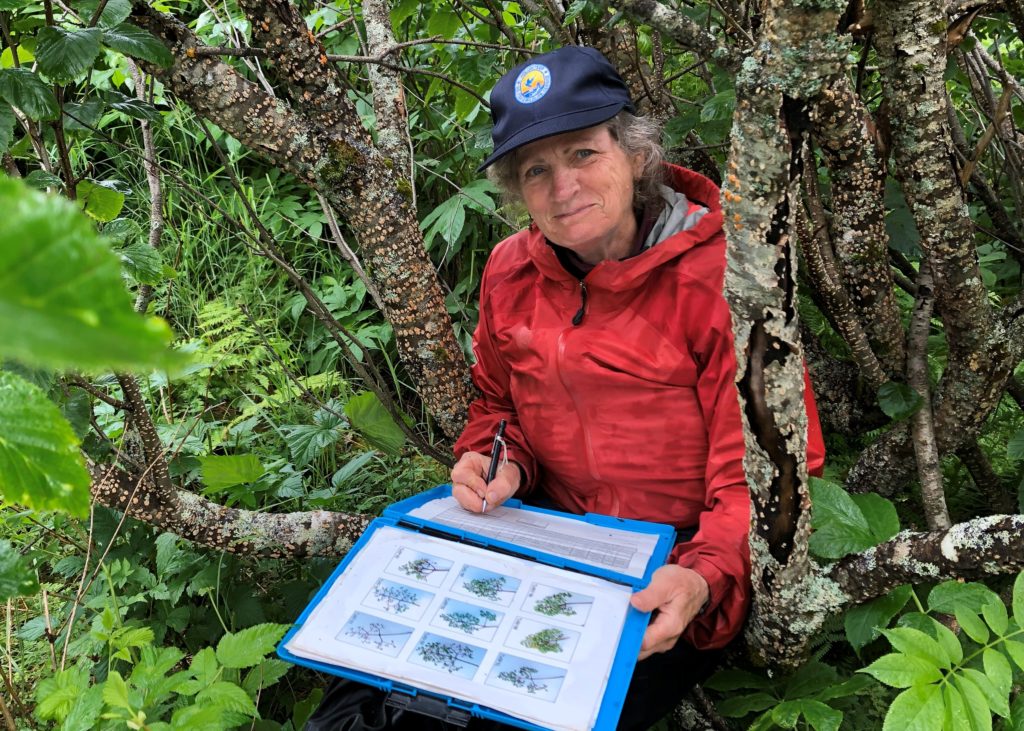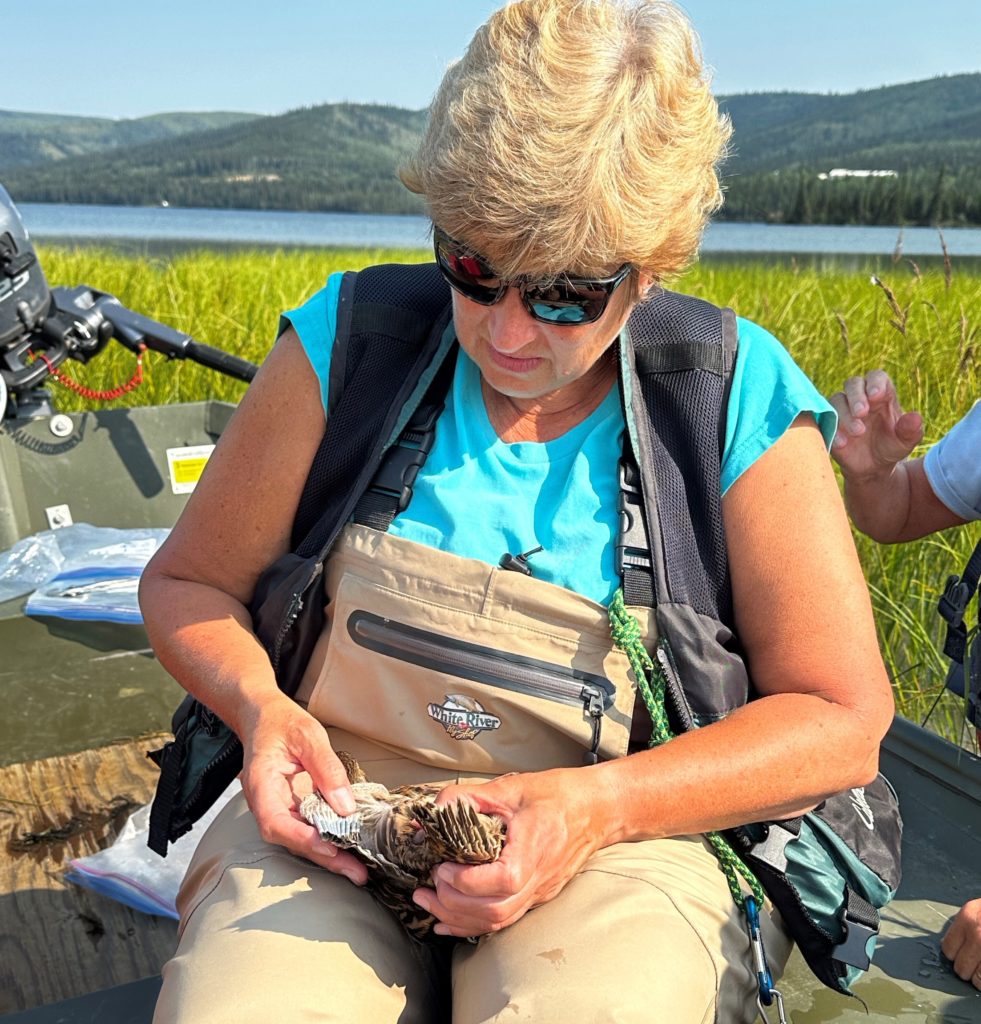by John Sargent, Fairbanks Friends Volunteer
John Sargent volunteered with U.S. Fish and Wildlife Service at the Izembek National Wildlife Refuge assisting with the Pacific Brant Age Ratio Study during October 3 to 13, 2023. Nearly all of the worldwide distribution of brant stage at Izembek Lagoon during the autumn migration before moving on to warmer climates in California and Mexico where they spend the winter months. Izembek Lagoon is also one of the largest concentrations of eelgrass in the world and was the first in North America listed as a Ramsar Wetland of International Importance.
The purpose of the study is to estimate the number of juvenile brant born this year relative to adults. This information will be used to determine the 2023 productivity of brant along the Pacific Flyway. By the end of the survey, we successfully met our goal of classifying 39,000 juvenile and adult brant in Izembek Lagoon! To access the lagoon we drove in pickups, walked in the tundra, boated in zodiacs and took side-by-side ATVs to get to more remote areas.
The Izembek adventure was scheduled to start on October 2, but was delayed one day because of the looming government shutdown that did not happen. Then, a few days later, while awaiting at the Anchorage airport for his flight to Cold Bay, John learned that his flight would be cancelled because of eruptions of the Shishaldin Volcano in the Aleutian Island of Unimak, west of Cold Bay. As the volcano calmed down, John and another volunteer, Catherine Trimingham, boarded the Aleutian Airlines flight to Cold Bay to finally start the Brant Age study adventure. While attempting to make a landing, at Cold Bay the plane lifted off again, presumably due to strong cross winds to make another attempt, which the pilot safety did. Such is life in one of the windiest and remote places in North America, and one of the most volcanically active regions in the world! Once at the refuge we settled in to the comfy house that served as the bunkhouse with full kitchen and hot running water.
Acknowledgements: John would like to thank the U.S. Fish and Wildlife Service, Izembek National Wildlife Refuge staff, especially Wildlife Biologist Alison Williams, Refuge Manager Maria Fosado, Biological Science Technician Cristina Trimingham, Wildlife Biologist Michael Swaim, volunteer Catherine Trimingham, and USGS Field Assistant Technician Evan Buck for field support, sharing field work, and making my stay and experience most enjoyable and memorable. Thank you all!
Bird and Wildlife Observed or reported on or near the lagoon:
Black brant (very abundant- 100s of thousands), cackling geese (abundant) northern pintail, mallard, harlequin duck, gadwall, Eurasian widgeon, green wing teal, emperor geese, white fronted goose (one), greater yellowlegs, large feeding flocks of rock sandpiper, dunlin sandpiper, bald eagles, short eared owl, marlin, peregrine falcon, glaucous wing gulls, juvenile Sabine’s gull, tundra swan, red breasted mergansers, Steller’s eider (one), black legged kittiwakes, snipe, fox sparrow (dark subspecies), willow ptarmigan, red necked grebe, Pacific loon, ravens, black billed magpies and Lapland longspurs. Also, wolf, brown bear tracks, brown bear scats, and diggings for ground squirrels; arctic ground squirrels; red fox, Pacific walrus (hundreds sunbathing), harbor seals and sea otters abundant feeding in lagoon. Coho salmon carcasses in creeks.
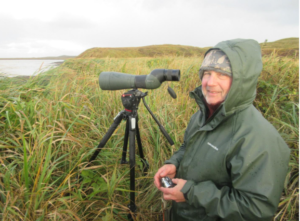
Ahhh… we finally made it to Izembek Lagoon to start the Brant Age Ratio Survey! The weather was blustery and we lucked out to have only limited rainfall, mild temperatures (mid 40s) and no further substantial eruption of volcanos! John Sargent counting brant.
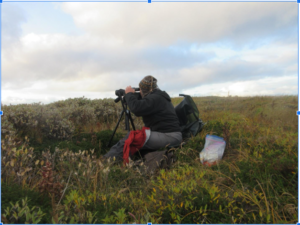
Mike wearing his comfy wool hat while characterizing brant juveniles and adults at Izembek Lagoon.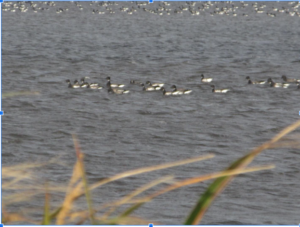
Brant geese at Izembek Lagoon.

Alison, Christina, Evan and Catherine counting a large flock of brant. Most birds were too far away from shore to count but with use of a zodiac we were able to access more out-of-the-way areas of the lagoon.

Zostera marina (eelgrass), one of many worldwide species of seagrasses. Brant forage almost exclusively on eelgrass leaves during their autumn in Izembek Lagoon. The seeds are an important food for dabbling ducks.
And the sun did shine a few times! This is the eelgrass beds during low tide. During low tide we walked the Zodiac to deeper water. This was fortunate because it enabled us to get up close and personal with the eelgrass, the productive muds rich in detritus, and the abundance of shellfish and crabs that inhabit this important resource. We also saw many sea otters and harbor seals in the lagoon, and a large group of sunning walrus near the entrance with the Bering Sea!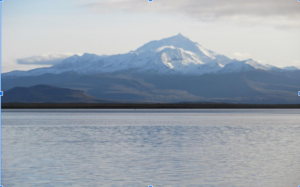
We rejoiced when Frosty Peak, a large volcano became visible on the last day of our survey.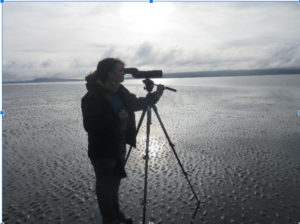
Izembek National Wildlife Refuge Wildlife Biologist, Alison Williams. surveying for brant at Izembek Lagoon. I thank her for her knowledge, skill at boat handling (especially in ocean swell near the outlet to the Bering Sea), and her kindness and graciousness during the survey work, planning, and making this a truly memorable experience.

